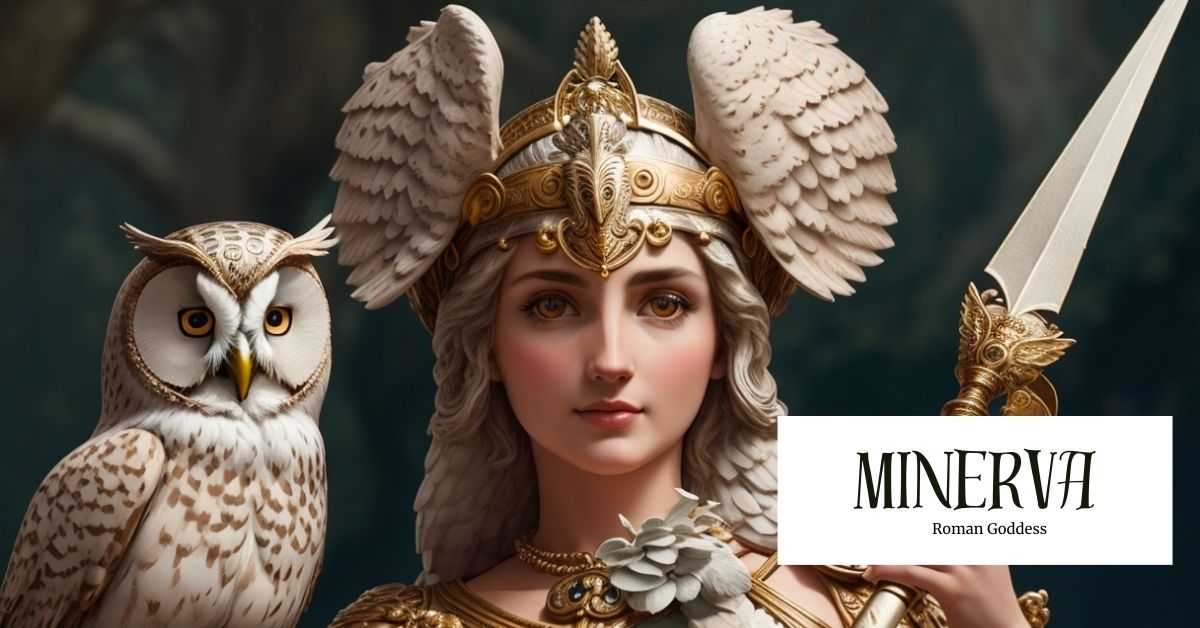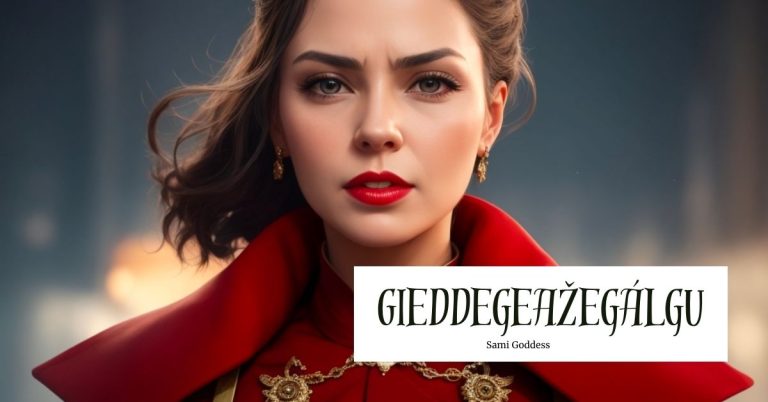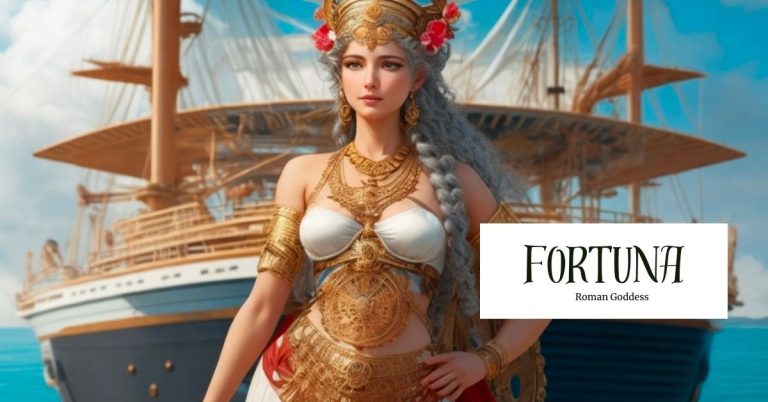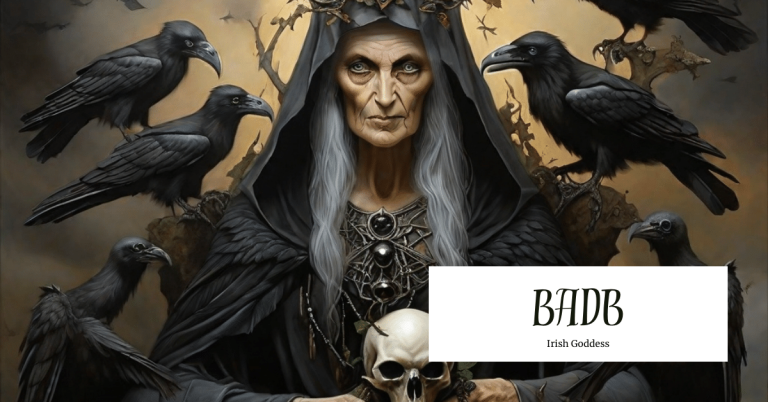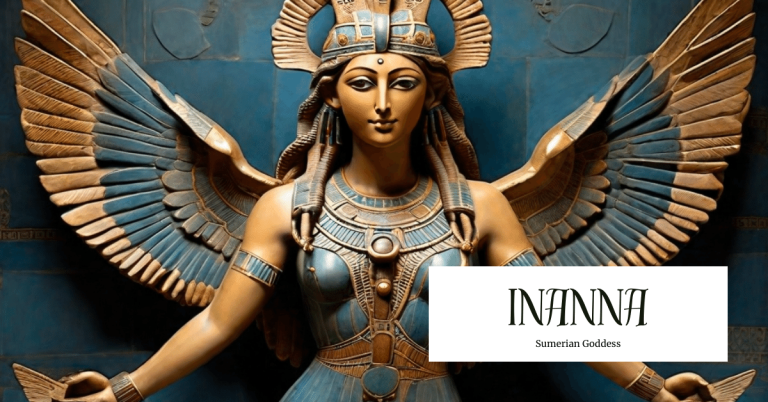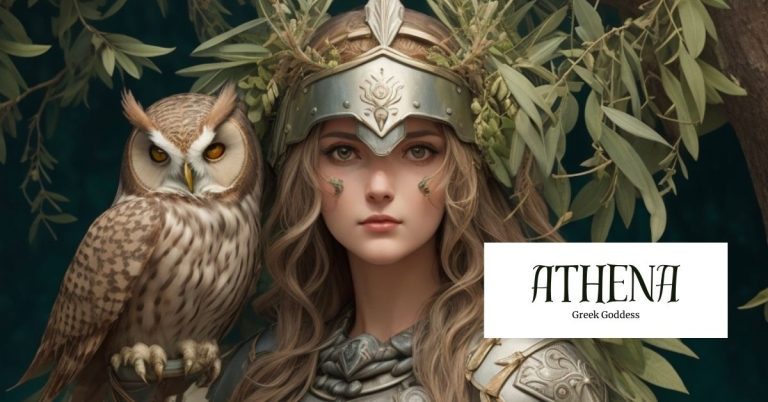Minerva: The Roman Goddess Of Wisdom And Strategy
Minerva, the goddess of wisdom and strategy, holds a prominent position in the realm of Roman mythology. Also Known as Pallas Athena in Greek mythology, Minerva is revered for her intellect, strategic acumen, and creative prowess. Legends and tales surrounding Minerva abound, depicting her involvement in epic battles, her guidance of heroes, and her role as a patroness of crafts and civilization. Even in modern times, Minerva’s legacy endures. From educational institutions adopting her name and symbolism to literary works that draw inspiration from her wisdom, Minerva continues to inspire and captivate. Her influence is a testament to the enduring appeal of wisdom and strategic thinking in our ever-evolving world. We will embark on a journey to unravel the mysteries of Minerva’s mythology, exploring her abilities and the legends that surround her. Join us as we delve into the realm of this remarkable goddess, discovering the timeless wisdom and strategic brilliance she embodies.
Overview of Minerva
Minerva, daughter of Jupiter (Zeus in Greek mythology), is revered as the goddess of wisdom, strategic warfare, and crafts. Renowned for her intelligence and quick thinking, she is often depicted wearing a helmet and holding a spear or shield. In Greek mythology, Minerva corresponds to Athena, who also personifies wisdom and strategic prowess.
Source: Library of Congress
This painting by Edihu Vedder shows Minerva with her spear as she holds a scroll containing the titles of various educational pursuits.
Titles
- Goddess of Wisdom
- Goddess of Strategy
- Patroness of Arts and Crafts
- Goddess of Justice
- Goddess of Learning
- Protectress of Cities
- Goddess of Victory
Abilities
Minerva possesses a remarkable array of abilities that showcase her unparalleled intellect and strategic prowess. As the embodiment of wisdom, she has an innate understanding of complex matters and possesses the power to impart knowledge and insight to mortals. Her strategic abilities are legendary, as she can devise intricate plans and tactics that lead to triumph in both warfare and governance. With her keen perception and analytical mind, Minerva is known for her ability to foresee the outcomes of various situations, enabling her to make informed decisions and guide others towards success. Furthermore, she possesses exceptional skill in the arts and crafts, including weaving, pottery, and metalwork. Minerva’s abilities encompass not only intellectual brilliance but also practical expertise, making her a formidable force in all endeavors requiring wisdom, strategy, and creative problem-solving.
Characteristics
Minerva is depicted as a mature and dignified goddess with a stern yet composed demeanor. Often portrayed with piercing gray eyes, she radiates an aura of wisdom and authority. Her physical appearance exudes grace and strength. She dons a crested helmet and carries a spear and an aegis, a protective shield adorned with the head of Medusa. This symbolizes her prowess in warfare and strategic planning.
Traits
Minerva possesses a rich tapestry of traits that define her remarkable persona. One of her prominent traits is her unparalleled intellect and wisdom. Known for her sharp insights, she is a beacon of knowledge and strategic thinking. With her disciplined and focused nature, Minerva exhibits traits of determination and perseverance, constantly striving for excellence in all endeavors. She embodies a sense of authority and regality, commanding respect and admiration.
Additionally, Minerva displays a balanced and fair approach to justice, highlighting her traits of compassion and fairness. She is also associated with courage and bravery, as symbolized by her weaponry and her role as a protector in battle. As a patroness of arts and crafts, Minerva showcases traits of creativity and innovation, inspiring artisans and craftsmen to unleash their talents. Overall, Minerva’s traits of wisdom, determination, fairness, authority, bravery, and creativity make her a revered and admired goddess.
Symbols
Source: The Met Museum
Minerva is shown as the Goddess of War. She is clad in a golden gown and carries a sword and spear, ready for battle.
Minerva is adorned with a rich tapestry of symbols that encapsulate her essence, such as the owl, the aegis, the Gorgoneion, and the olive tree. The owl, a timeless emblem of wisdom, insight, and keen perception stands as one of her most prominent symbols, accompanying her in artwork, and representing her deep knowledge. The aegis, a shield or protective cloak bearing the head of Medusa, symbolizes her divine authority and safeguarding power. The Gorgoneion, a depiction of the fearsome Gorgon Medusa, is another emblem associated with Minerva, serving as a protective charm against evil forces. Additionally, the olive tree symbolizes peace, prosperity, and fertility, reflecting Minerva’s patronage of arts, crafts, and civilization. These symbols collectively convey the multifaceted nature of Minerva, showcasing her wisdom, protection, and creative influence.
Festivals and Rituals
The Roman goddess of wisdom and strategy was honored through various festivals and rituals that celebrated her divine influence. One of the most significant festivals dedicated to Minerva was the Quinquatria, a five-day celebration held annually from March 19th to March 23rd. During this festival, the Roman community, particularly artisans and craftsmen, paid homage to Minerva by offering prayers and sacrifices in her temples. The Quinquatria also served as an occasion to showcase artistic talents, with competitions and performances held in various artistic disciplines such as music, poetry, and theater.
Legends associated with Minerva
Minerva’s myths and legends offer fascinating insights into her character and significance. Let us explore a few notable stories.
Origin story
In Roman mythology, Minerva is believed to be the daughter of Jupiter (Zeus in Greek mythology) and Metis, the Titaness of wisdom. One of the earliest written accounts of Minerva’s birth can be found in Ovid’s “Metamorphoses,” where it is described that Jupiter swallowed Metis while she was pregnant with Minerva to prevent a prophecy that stated any offspring of Metis would surpass him in power. As a result, Minerva was said to have been born fully formed and armored from Jupiter’s head, springing forth as a fully-grown goddess of wisdom and war.
It’s worth noting that the Greek goddess Athena shares many similarities with Minerva, and their origin stories are often intertwined. In Greek mythology, Athena is born from Zeus’ head in a similar manner. The Roman depiction of Minerva drew inspiration from the Greek Athena, and the two goddesses became closely associated with wisdom, strategy, and intellectual pursuits.
While specific sources for the origin story of Minerva may vary, the accounts mentioned above provide a general understanding of her birth and association with wisdom and war in Roman mythology.
The Contest of Arachne
In a famous legend, Arachne, a mortal weaver, challenged Minerva to a weaving contest. Arachne, filled with pride and confidence in her skills, challenged Minerva to prove her superiority. Both artists wove magnificent tapestries, depicting tales of gods and mortals, with Minerva’s work exemplifying divine elegance and Arachne’s showcasing mortal brilliance. Despite Arachne’s remarkable craftsmanship, her hubris and boastful nature led to her downfall. Minerva, resentful of her mortal challenger, transformed Arachne into a spider as punishment for her arrogance, forever weaving intricate webs as a reminder of her former talent. The contest of Arachne serves as a cautionary tale about the perils of excessive pride and the consequences of challenging the gods’ authority.
The Guardian of Rome
In ancient Rome, Minerva, the goddess of wisdom, was believed to have a close relationship with her father, Jupiter. As the Roman empire expanded, Jupiter entrusted Minerva with the responsibility of protecting the city of Rome. She took on this role with great dedication and became a guardian deity of the city.
According to Roman mythology, Minerva’s wisdom and guidance were instrumental in shaping Rome’s destiny. She provided strategic counsel to its leaders, inspired artists and craftsmen, and bestowed knowledge upon scholars and philosophers. The people of Rome revered her as a wise and benevolent goddess, attributing their successes to her divine influence. This legend celebrates Minerva’s role as a protector and patroness of Rome, highlighting her wisdom and strategic acumen in guiding the city to greatness.
Influences of other religions/cultures on Minerva
Minerva’s influence extended beyond the boundaries of Roman mythology, as she interacted with various cultures and underwent syncretism with other goddesses. When the Romans conquered different regions, they often assimilated the deities of the conquered cultures into their own pantheon. For instance, in the English city of Bath, the locals worshiped the goddess Sulis. The Romans merged Sulis with Minerva, resulting in the syncretic goddess Sulis-Minerva. This blending of traditions allowed for the incorporation of local beliefs and customs into the worship of Minerva.
Furthermore, with the rise of Christianity, many goddesses were integrated into the new religious framework as saints or merged with figures such as the Virgin Mary. However, Minerva’s distinct identity and associations with wisdom and strategy ensured her continued recognition and reverence throughout history.
Modern Appearances
Minerva has an enduring presence. Her significance as a goddess of wisdom and strategy continues to inspire and captivate audiences across different artistic and educational domains.
Culture
Minerva has often been adopted as a university symbol as her name and essence are synonymous with wisdom. The Roman goddess has been adopted as a symbol by numerous educational institutions worldwide, such as Minerva Schools at KGI, the Minerva Art Academy located in the Netherlands, and Minerva University, a virtual university that offers undergraduate and graduate courses in a variety of fields.
Art
Artists throughout history have depicted Minerva in various forms of visual art, including paintings, sculptures, and illustrations. Her iconic attributes, such as the helmet, shield, and owl, are often incorporated into these representations.
Source: The Getty Museum Collection
This late 17th-century statue by Augustin Pajou depicts Minerva safeguarding the cherished elements portrayed at her feet, painting, sculpture, music, justice, and medicine.
Literature
The Lost Symbol by Dan Brown
In this bestselling novel, Minerva plays a significant role as a symbol of wisdom and knowledge. The story revolves around a quest for hidden secrets and the exploration of ancient mysteries, with Minerva serving as a guiding force for the protagonist.
The Minerva Project by Karen Swallow Prior
This novel draws inspiration from Minerva as a representation of wisdom and intellectual pursuits. Set in a futuristic society, the story explores themes of education, technology, and the importance of critical thinking, all tied to the influence of Minerva’s wisdom.
Goddess of Yesterday by Caroline B. Cooney
This young adult novel incorporates Minerva, known as Athena in Greek mythology, as a central character. The book reimagines the tale of the Trojan War from the perspective of Anaxandra, a young woman caught in the midst of the conflict, and explores the role of Athena/Minerva in shaping the narrative.
Minerva: The First Defender by Kristen LePine
This fantasy novel introduces Minerva as a modern-day superhero who fights against injustice and protects the world using her wisdom and strategic abilities. The story reimagines Minerva’s mythological persona in a contemporary setting.
These artistic and literary examples showcase how Minerva, whether directly or through her Greek counterpart, continues to be reimagined in modern depictions. Authors continue to draw inspiration from Minerva as a symbol of wisdom, knowledge, and strategic thinking. Through their narratives, they explore the enduring relevance of Minerva’s character, and her capacity to inspire and guide protagonists in their quests for truth, justice, and personal growth.
Final Thoughts
In the tapestry of mythology, Minerva stands as an eternal flame of wisdom and strategic brilliance. Her presence has transcended the bounds of ancient Rome, weaving its way into the fabric of modern culture. From educational institutions proudly bearing her name to the brushstrokes of artists who seek to capture her essence, Minerva’s legacy endures as a timeless symbol of intellect. Minerva’s mythology reveals a goddess who embodies the harmonious marriage of wisdom and strategy. In a world that is ever-changing, Minerva’s light remains steadfast. Her regal presence reminds us to embrace the power of knowledge, to strategize thoughtfully, and to champion justice in all endeavors. Her essence beckons us to seek wisdom, not only in the grand battles of life but also in our daily endeavors.
References
Beard, Mary. The Roman Triumph. Belknap Press, 2012.
Dillon, Matthew. Girls and Women in Classical Greek Religion. Routledge, 2002.
Grant, Michael. Myths of the Ancient Greeks. Penguin Books, 1998.
Kahil, Lilly. “LIMC-France (Lexicon Iconographicum Mythologiae Classicae).” n.d. Accessed 1 July 2023.
Kerenyi, Karl. The Gods of the Greeks. Thames & Hudson, 1951.
Ovid, “Metamorphoses”
Rittika Dhar, “Minerva: Roman Goddess of Wisdom and Justice”, History Cooperative, November 3, 2022, https://historycooperative.org/minerva/. Accessed July 4, 2023.

